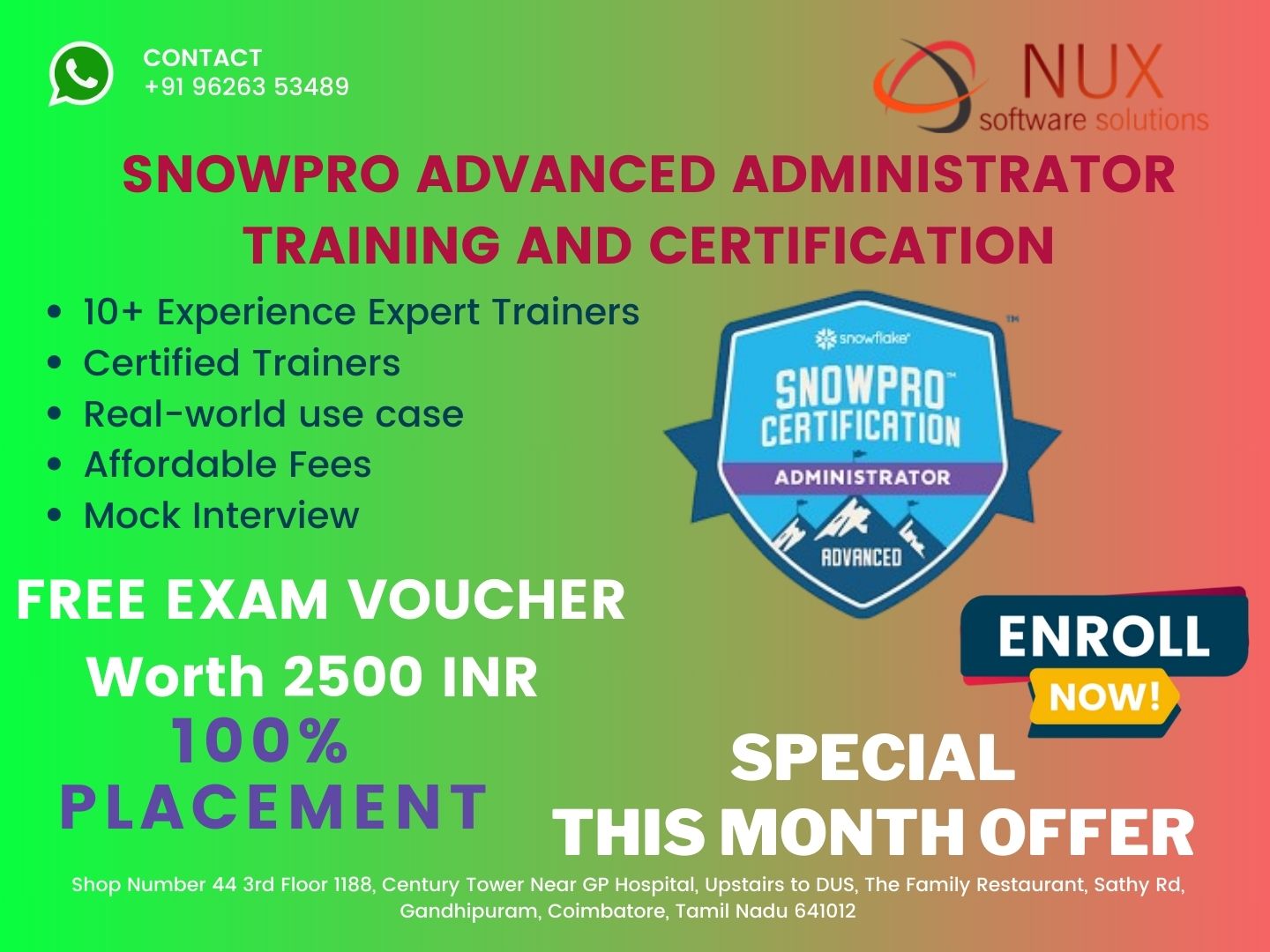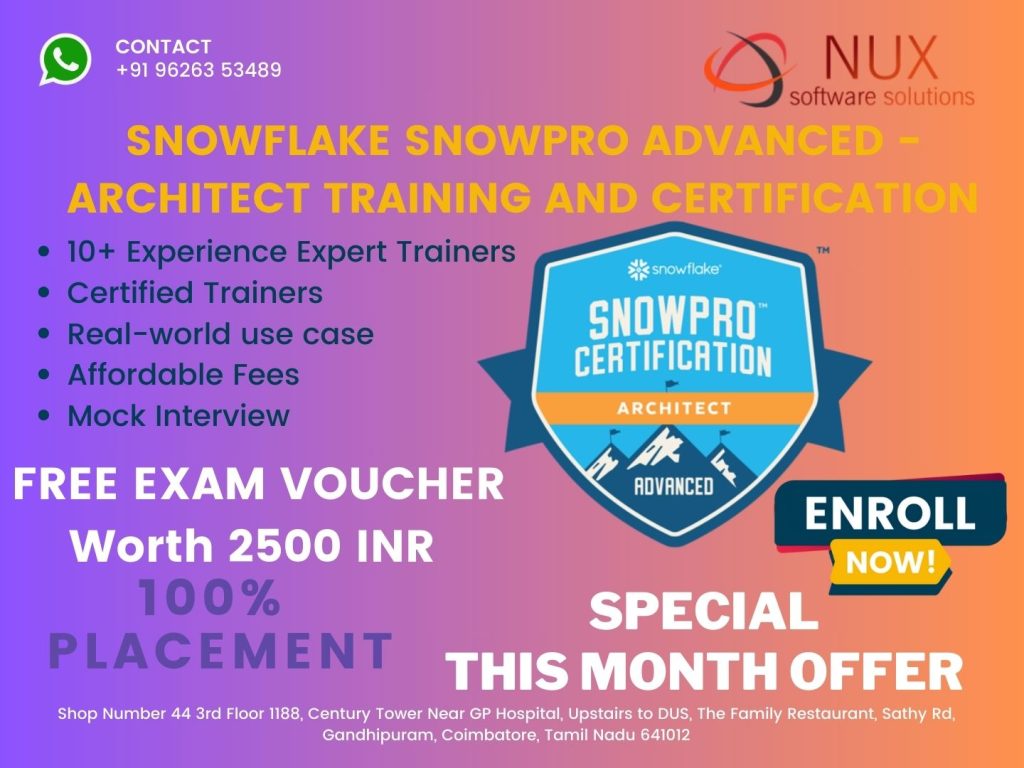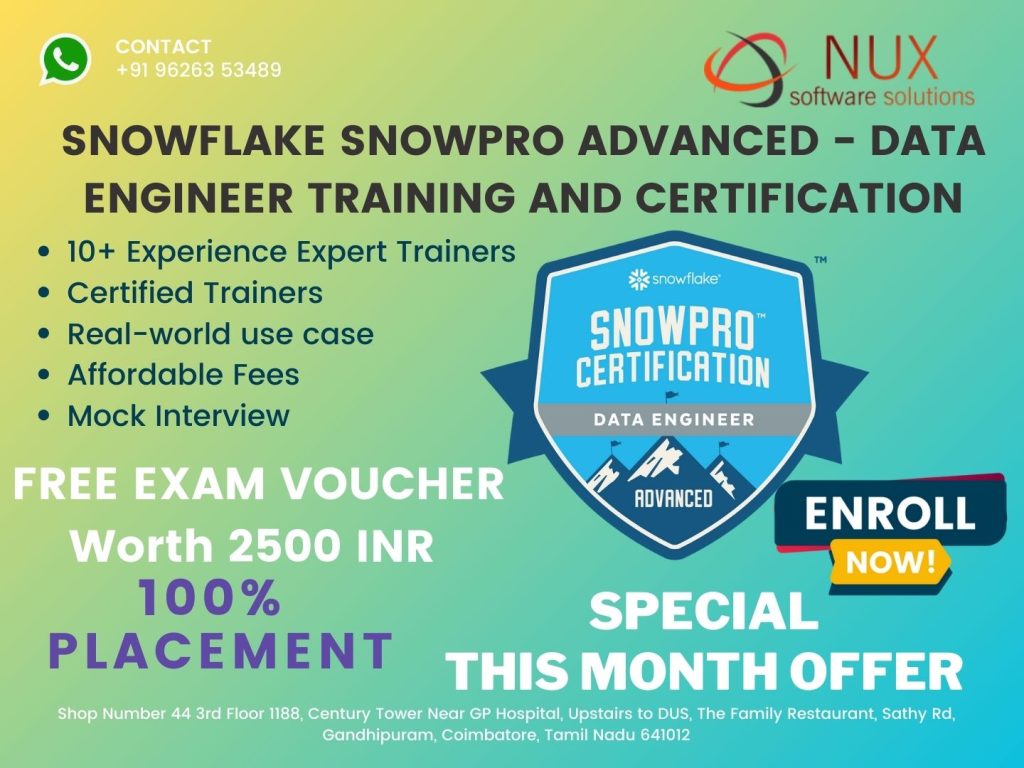SnowPro Advanced Administrator

Course Summary
The SnowPro Advanced: Administrator certification is the next-level credential for professionals who already understand Snowflake fundamentals and want to specialize in enterprise-level platform administration. This training covers advanced features such as user and role security, resource management, data governance, cost optimization, and multi-region deployments — all critical for maintaining high-performance Snowflake environments.
Our course is aligned with the official certification scope and helps IT professionals manage Snowflake’s architecture, workloads, and security effectively in real-world, large-scale data environments.
Why Choose This Course
As Snowflake adoption grows across industries, companies are seeking skilled administrators to secure, monitor, and optimize their Snowflake infrastructure. This course:
Goes beyond theory with hands-on Snowflake administration labs
Covers key enterprise topics like multi-cloud security, governance, and resource scaling
Equips you for real operational challenges in production Snowflake deployments
Prepares you for the SnowPro Advanced: Administrator Certification Exam
Taught by experienced data architects and Snowflake-certified trainers
Whether you’re working in data engineering, platform operations, or enterprise cloud infrastructure — this course delivers skills that matter.
Who Should Enroll
This course is ideal for:
Snowflake administrators managing cloud data environments
Data platform engineers or DevOps teams responsible for Snowflake performance
Data architects working on multi-cloud or multi-tenant setups
Professionals preparing for the SnowPro Advanced: Administrator Certification
IT and security professionals involved in data access control, governance, or compliance
Skills You Will Gain
Advanced user and role management using RBAC (Role-Based Access Control)
Resource monitoring, credit usage tracking, and warehouse optimization
Data security techniques including encryption, masking, and network policies
Governance configuration with object tagging, access policies, and data classification
Multi-region, failover, and business continuity strategies in Snowflake
Cost control through warehouse sizing, scaling, and automation
Career Benefits
By completing this course, you will:
Be fully prepared for the SnowPro Advanced: Administrator Certification
Qualify for high-demand roles such as Snowflake Admin, Data Platform Engineer, or Cloud Data Operations Lead
Gain credibility in handling production-grade Snowflake deployments at enterprise scale
Understand how to optimize cost, performance, and compliance in large Snowflake environments
Position yourself for architect or lead roles in Snowflake-focused cloud data teams
Lead the Future of Cloud Data Operations
Take your Snowflake expertise to the next level. If you’re ready to become the go-to administrator in data-driven enterprises, this is the certification and training that sets you apart.
Book your seat today. Advance your career tomorrow.
SnowPro Advanced Administrator Syllabus
Modules
Domain 1.0: Snowflake Security, Role-Based Access Control (RBAC), and User Administration
1.1 Set up and manage Snowflake authentication.
1.2 Set up and manage network and private connectivity.
1.3 Set up and manage security administration and authorization.
1.4 Given a set of business requirements, establish access control architecture.
1.5 Given a scenario, create and manage access control.
1.6 Given a scenario, configure access controls.
Domain 2.0: Account Management and Data Governance
2.1 Manage organizations and accounts.
2.2 Manage organizations and access control.
2.3 Implement and manage data governance in Snowflake.
2.4 Given a scenario, manage account identifiers.
2.5 Given a scenario, manage databases, tables, and views.
2.6 Perform queries in Snowflake.
2.7 Given a scenario, stage data in Snowflake.
2.8 Given a scenario, manage streams and tasks.
Domain 3.0: Performance Monitoring and Tuning
3.1 Given business requirements, design, manage, and maintain virtual warehouses.
3.2 Monitor Snowflake performance.
3.3 Manage DML locking and concurrency in Snowflake.
3.4 Given a scenario, implement resource monitors.
3.5 Interpret and make recommendations for data clustering.
3.6 Manage costs and pricing.
Domain 4.0: Data Sharing, Data Exchange, and Snowflake Marketplace
4.1 Manage and implement data sharing.
4.2 Use the Data Exchange.
4.3 Use the Snowflake Marketplace.
Domain 5.0: Disaster Recovery, Backup, and Data Replication
5.1 Manage data replication.
5.2 Given a scenario, manage Snowflake Time Travel and Fail-safe.



